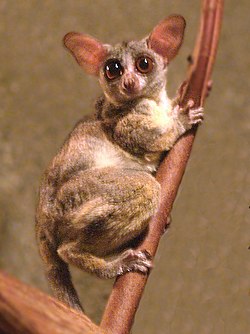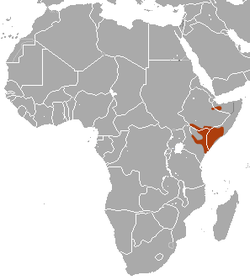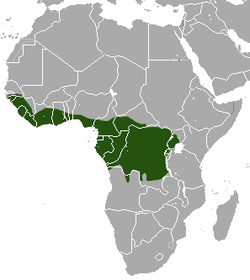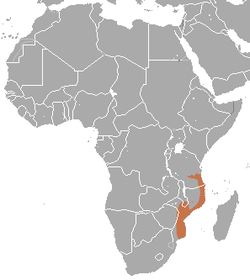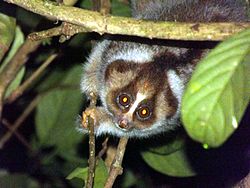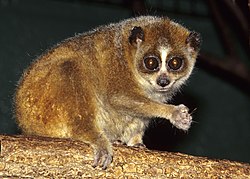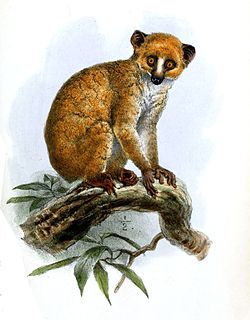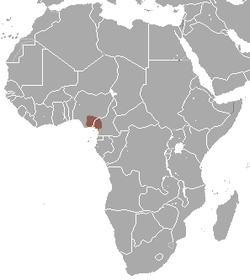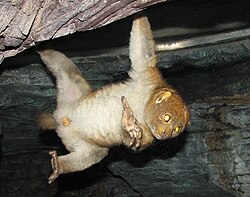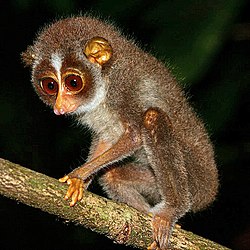
Lorisoidea is a superfamily of nocturnal primates. Members of this superfamily are called lorisoids, and include lorises, angwantibos, pottos, galagos, and bushbabies. Lorisoidea is one of two superfamilies that form the suborder Strepsirrhini, itself one of two suborders in the order Primates. They are found in Asia and Africa, generally in forests, though some species can be found in shrublands and savannas. They range in size from the Prince Demidoff's bushbaby, at 10 cm (4 in) plus a 15 cm (6 in) tail, to the West African potto, at 39 cm (15 in) plus a 10 cm (4 in) tail. Lorisoids primarily eat fruit, insects, and tree gums and resins. Most lorisoids do not have population estimates, but the ones that do range from 40 mature individuals to 500,000. Six species are categorized as endangered: the Bengal, pygmy, Sumatran, and Sunda slow lorises, the red slender loris, and the Rondo dwarf galago. A further two species are categorized as critically endangered: the Bangka slow loris and the Javan slow loris.
Contents
The thirty-five extant species of Lorisoidea are divided into two families: Galagidae, containing nineteen bushbaby and galago species divided between six genera, and Lorisidae, containing sixteen species divided between the three genera in the loris subfamily Lorisinae and the two genera of the angwantibo and potto subfamily Perodicticinae. Several extinct prehistoric lorisoid species have been discovered, though due to ongoing research and discoveries the exact number and categorization is not fixed. [1]







